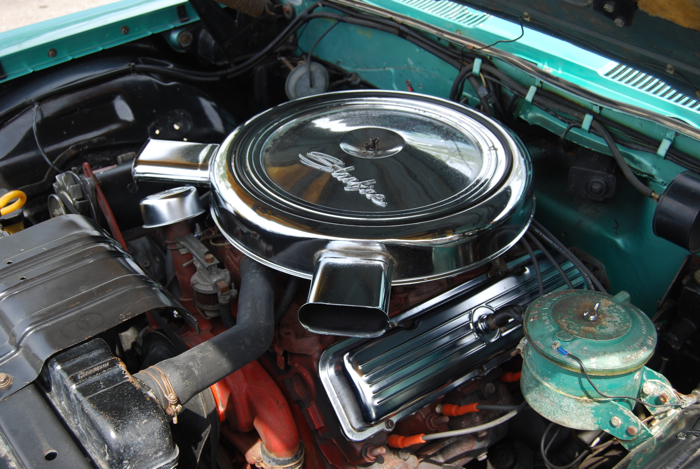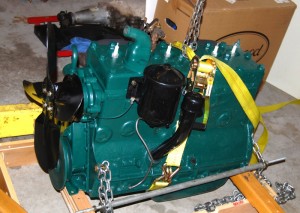
A restoration shop owner we know sends his engines out to professional rebuilders. There are two engines sitting in his shop right now – a six and an eight. Both were rebuilt by different shops. One of those shops will be getting all of his engine work in the future. The reason isn’t the quality of work or even the price; it is the attention one shop paid to details.
The eight-cylinder engine came back with a part missing. It was cleaned up, but left unpainted. This is probably standard operating procedure for most engine rebuilds, but maybe it shouldn’t be. Read on and see what you think.
The six-cylinder engine came back complete, even though several parts had been broken. The shop worked with the restorer to find the missing parts. The six-cylinder engine came back painted in the correct green color, even though the customer had not expected it to be painted. The rebuilder also went through the trouble of finding a reproduction decal for the air cleaner and when the shop sent the engine back to the restorer, it came with jugs of break-in oil.
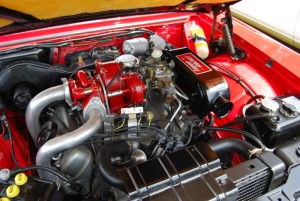
None of this service was free, but it consisted of things that restorer would have had to do if the engine rebuilder didn’t. So, he was happy to pay a little extra to get an engine that could be directly bolted back into the car with no muss and no fuss. At the same time, for “sweating the details,” the engine rebuilding shop took in extra profit on the job, made the customer’s work easier and made such a good impression that the restorer is taking all future jobs there.
Can your shop reap similar benefits by turning out engines as a complete package, rather than just a remanufactured hunk of iron? The answer is probably yes if you’re doing an engine for an enthusiast’s car, whether it’s an antique or a late-model muscle or luxury car. A minivan owner might not care if the engine is painted, but you never know. Some vehicles like a Dodge Ram, Chevy Silverado or Ford F-150 seem to have cult-like followings and the little details do matter to those customers.
Enthusiasts also like to accessorize their vehicles and their passion for chrome accents or carbon fiber parts often extends to the engine bay. Shops that sell chrome for semi trucks are setting new sales records these days and there’s no reason why your shop can’t build its bottom line by offering engine accessories as an option with engine rebuilding work. Let’s go down the list of little things you can do to an engine item by item.
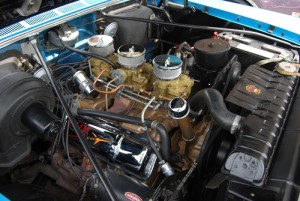
Help Customers Find Parts
The shop that did the eight-cylinder engine lost a customer by sending the engine back with missing parts. The missing items were a plumbing part on the bottom end and a head bolt. Because one head bolt was missing, the shop did not attach the cylinder head either. The six-cylinder engine had actually toppled off an engine stand and two small pieces broke. Instead of leaving the customer to worry about this, the shop helped the customer identify what broke and determine which parts were good and which were bad.
With resources such as the Internet and online auctions available today, locating obsolete parts is a lot easier than it used to be. Both parts for the six-cylinder motor came from RPM Classics (www.classicparts.com) a salvage yard in Albert Lea, MN, that sells parts on eBay. The restorer actually searched the parts out and bought them, but the engine shop worked closely with him.
Most rebuilders also know about some of the major sources of new old stock (NOS) and new old replacement stock (NORS) obsolete engine parts such as Terrill Machine (www.deleontexas.com/chamber/tmachine.php), Northwestern Auto Supply (www.northwesternautosupply.com), Kanter Auto Parts (www.kanter.com) and Egge Machine (www.egge.com).
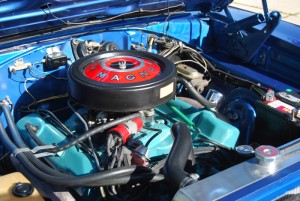
Naturally, some rebuilders will not want to get involved with actually sourcing parts for clients, but why not have signs in the shop listing such sources so customers can find and buy the parts and bring them to you? A simple customer service like that might pay off a dozen times over and won’t add an hour to your labor costs.
Paint a Customer’s Engine?
Painting an engine doesn’t take very long, but it can save your customer hours of work. That statement may seem illogical, until you realize that the rebuilder can paint the engine before it’s assembled, but the customer has to refinish it after other parts are installed. That can make it much more difficult and time consuming to paint a completed engine. Most customers will appreciate it if the engine comes back looking like it did when the car or truck was new.
As we mentioned above, the six-cylinder engine was painted, even though the customer didn’t expect it. Since that could cause problems if the color was wrong or something like that, we’d recommend offering painting as an option. Many customers will want the option and be willing to pay extra for it.
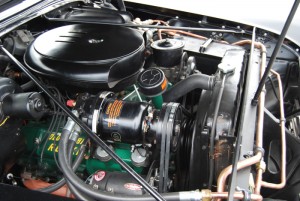
It may or may not be important to paint the engine a factory correct color, but it’s a good thing to ask customers if that’s important to them. Information about the original colors of many engines is available on the Internet. A good source of engine paints for obsolete engines is Hirsh Automotive (www.hirschauto,com) of Newark, NJ. Eastwood (www.eastwood.com) also supplies a variety of engine paints, and sells heat-resistant intake and exhaust manifold paint that adds to an engine’s appearance.
The shop that did the six-cylinder engine painted the engine accessories glossy black. This type of finish was applied to the air cleaner, oil fill tube and cap, pulleys and canister type oil filter and really set off the look of the engine. The shop also built the cost of painting the engine into the overall job, so the customer felt like he was getting something for free. That’s always a nice feeling.
Adding Details and Decals
The six-cylinder engine came back to the restorer with all the black-painted accessories installed. It even had the fan belt on the pulleys and some of the plumbing attached. The accessories for the eight were not attached. The restorer had the job of putting them back on. When he attached the starter, he noticed that the Mopar nomenclature tag was lacking the bright red paint that had set off the metal-colored lettering when the starter was new.
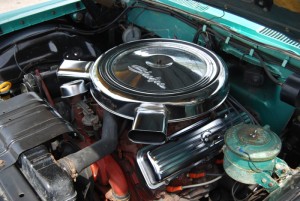
After trying to restore the tags several different ways, the restorer found no joy and looked on the Internet. He was able to locate a company called Bob’s Automobilia (www.bobsautomobilia.com) that sold new reproduction starter nomenclature tags for Delco-Remy starters, generators and distributors. Although this didn’t help him with his Mopar project, it was nice to know for the future, in case a Buick, Cadillac, Chevrolet, Oldsmobile, Pontiac or GMC came into his shop. The tags sell for $12.95 each and the engine shop willing to weld on that little extra detail could have made $50 or so for the tags and installation.
Engine decals are another item that a savvy shop could install for a customer to make extra money and boost customer satisfaction. These are readily available for different makes and models of cars from catalog houses. Automakers applied decals to air cleaners, rocker arm covers, oil filters, air conditioner compressors and other engine parts. To find decals for a certain car use any Internet search engine to look for what you need according to the brand of car and type of decal you need. For instance, we typed “Dodge Charger air cleaner decal” into a search engine and came up with 217,000 results.
Going the Extra Mile – or Extra Quart
We already told you that the rebuilder of the six-cylinder engine provided the customer with break-in oil, too. With each engine he delivers to a customer, this shop owner supplies the proper number of quarts of break-in oil. This is built into the cost of the job and has a number of advantages. The shop makes more money and more profit and also has fewer engines come back with start-up and break-in problems. Including that oil pretty much guarantees that the customer will start off with suitable, high-quality lubrication.
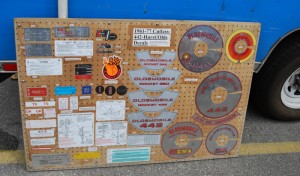
Don’t Forget Accessories
Engine accessories can be factory options (especially on a muscle car engine) or aftermarket items. Many engine rebuilders will not want to go through the trouble of hunting down original factory accessories because they can be hard to find and very expensive. The shop’s main job is making engines work – dressing them up is secondary to making them work like new again, right?
On the other hand, aftermarket accessories are usually readily available and can add a bunch to your shop’s bottom line. Items such as chrome valve covers are an old standard. A newer market segment that has really grown lately is the pricey, high-performance air filter niche. Pulley systems are another way to bolt more profits onto an engine job. Catalog houses such as JEGs (www.jegs.com), Summit Racing (www.summitracing.com) and J.C. Whitney (www.jcwhitney.com) will be happy to send you information about products.
Of course, a lot of engine rebuilders prefer looking at their role as strictly a technical one, but as many other industries have proven, modern consumers like to buy things in all-in-one packages or “bundles.” Putting together a bundle of add-ons that enhance the basic work of rebuilding an engine may be a way to squeeze more profits out of jobs you already have coming into your shop.

